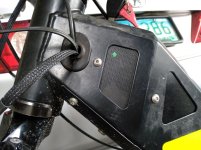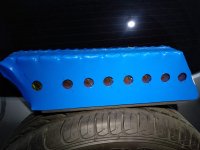Hi all,
Here is a battery pack of eBike, have properties is 72V 68Ah.
Here is a picture outside of pack:

As i know, this pack have only 1 vent behind the pack to cooling battery system. At current version, 1 vent is enough to cooling, but in the future version, I think it's not !

So, now I want to create a passive air-cooled (don't use energy). But, the most problem are dust, moisture, water tiny insect can be infiltrate inside. It can be destroy from inside; corrosion, ...
So, my question is: how can i do to cooling the battery pack while still anti dust, moisture, ...
Thank you so much !
Please help me.
Here is a battery pack of eBike, have properties is 72V 68Ah.
Here is a picture outside of pack:

As i know, this pack have only 1 vent behind the pack to cooling battery system. At current version, 1 vent is enough to cooling, but in the future version, I think it's not !

So, now I want to create a passive air-cooled (don't use energy). But, the most problem are dust, moisture, water tiny insect can be infiltrate inside. It can be destroy from inside; corrosion, ...
So, my question is: how can i do to cooling the battery pack while still anti dust, moisture, ...
I mean, because battery pack is fixed into a block, how I adjust the case outside?
Thank you so much !
Please help me.




